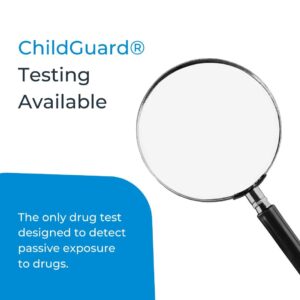Why is environmental exposure to drugs dangerous for children?
Environmental exposure to drugs can be dangerous for children due to several reasons including developmental Vulnerability, Lower Body Weight, increased absorption, limited ability to identify and avoid hazards, and long-term effects.
Developmental Vulnerability: Children’s bodies and organ systems are still developing, making them more susceptible to the harmful effects of drugs. Their metabolic and detoxification processes are not as efficient as adults, so they may have difficulty processing and eliminating drugs from their system. This can lead to a higher risk of toxicity and adverse health effects.
Lower Body Weight: Children have a lower body weight compared to adults, which means that even small amounts of drugs or toxic substances can have a more significant impact on their health. The same exposure that may not cause harm to an adult could be potentially harmful or even fatal to a child.
Increased Absorption: Children have a higher surface area-to-body weight ratio, which can enhance the absorption of drugs and toxic substances through the skin, respiratory system, and gastrointestinal tract. This increased absorption can result in higher systemic exposure and a greater risk of adverse effects.
Limited Ability to Identify and Avoid Hazards: Children may not understand the potential dangers associated with drugs or toxic substances. They may be more likely to accidentally ingest or come into contact with medications, household chemicals, or illicit drugs if they are not properly stored or secured. Young children, in particular, are known to explore their environment by putting objects in their mouths.
Long-Term Effects: Exposure to drugs during childhood can have long-lasting effects on health and development. Certain drugs or chemicals can interfere with the normal growth and functioning of organs, impair cognitive development, disrupt hormonal balance, or increase the risk of chronic diseases later in life.
Behavioral Effects: Drugs and toxic substances can also impact a child’s behavior and neurodevelopment. Certain drugs may affect the central nervous system, leading to behavioral changes, learning difficulties, or developmental delays.
To address the concern of environmental exposure to drugs in children, we offer ChildGuard® testing. ChildGuard® testing is specifically designed to detect passive exposure to drugs in children. It is important to note that environmental exposure testing is different from workplace drug testing.
Child hair samples often do not contain drug metabolites because the child has not ingested illicit substances. Standard drug tests commonly use government workplace testing guidelines, which can report negative results even when a native drug is present. This means that workplace guidelines can result in false-negative reporting for drug exposure in children.
In contrast, ChildGuard® testing utilizes hair samples and is 3.5 times more likely to detect methamphetamine exposure compared to standard drug tests. Additionally, ChildGuard® offers the option to test for the D/L methamphetamine isomer, providing professionals with the necessary information to make informed decisions.
ChildGuard® offers a range of panel tests, including 5, 7, 9, and 10 panels, to cater to specific drug exposure testing needs. A positive ChildGuard® test result suggests that the donor has experienced one or more of the following:
– Contact with drug smoke
– Contact with sweat or sebum (skin oil) of a drug user
– Contact with the actual drug
– Accidental or intentional ingestion of the drug(s)
By conducting ChildGuard® testing, professionals can gain valuable insights into a child’s exposure to drugs and take appropriate measures to ensure their health and well-being.
In conclusion, it is crucial to minimize environmental exposure to drugs and toxic substances to safeguard children’s health. Through ChildGuard® testing, professionals can accurately detect passive exposure to drugs in children, enabling them to make informed decisions and provide the necessary support and care.
To learn more on how Commodore Solutions can help you design and implement your drug and alcohol testing programs, please contact us.





